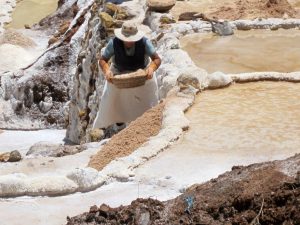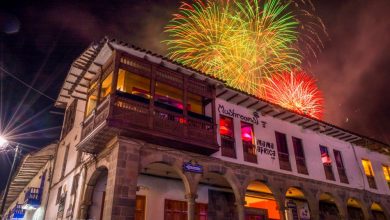Maras: Salt, History, and Tourism
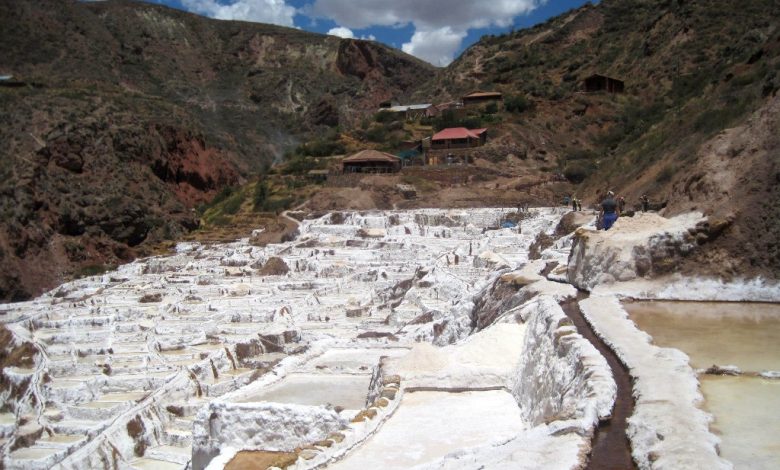
A very picturesque place whose customs and traditions are deeply rooted, Maras has a great historical and cultural value for Cuzco. It is located to the west of Cuzco at 3300 meters above sea level on a plateau. From it one can see the impressive Urubamba range of mountains and the high, snow-clad peaks of Chicon and Veronica.
From ancient times Maras has played an important role in the development of our history. In Inca times noblemen from Cuzco lived there. During the war of Manco Inca to recuperate his Quechua nation, it was a base for the invaders who were attempting to get to Ollantaytambo. For that reason one can still see today coat of arms from the Spanish nobility carved in the stone doorways of the houses. They indicate the importance this town must have had. During the times after the Spanish conquest Maras also was an obligatory stop for mule trains carrying goods to the city of Cuzco.
The Chronicler Guaman Poma de Ayala tells us that the town of Maras was probably taken by the third Inca Lloque Yupanqui long before the arrival of the Spanish. Evidently the people of Maras did not accept the Inca and rebelled against him. Angry at this the Inca invoked the Sun God and asked him to punish the disloyal rebels. In answer the Sun sent a rain of salt over that land so that it would become infertile and would not produce any food. He also made the water of its rivers salty so that the people could not quench their thirst.
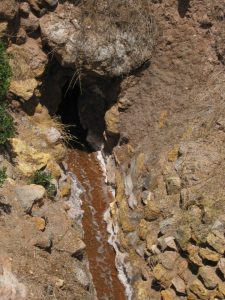
With the passage of time, this curse became a blessing. Thanks to the salty water, Maras could provide the Inca Empire with salt. Today people still consider the existence of the salt springs a blessing. From it comes salty water and has allowed people to develop the famous salt mines. These are more than 3000 small ponds with an average area each of 5 meters squared built on the slopes of the mountain Qaqawiñay.
When the dry season arrives the people of Maras direct the water from the main spring to fill each pond in turn. The water arrives in a network of Canals over the course of three days. When a pond fills its canal is closed and the water continues to the next one. It must be the dry season so that with the intense sunlight the water can evaporate and leaves the water’s salt behind solidified in layers.

After the water evaporates complete, a process that takes some 30 days, people from Maras begin to extract salt. They use tools like shovels, wood rakes, and little sacks in which to place the salt. When it is harvested it is taken to the town of Maras where it is treated with iodine and readied for human consumption.
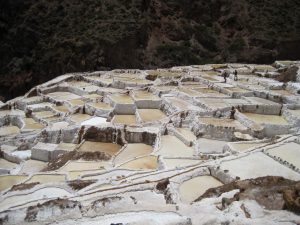
Only the inhabitants of Maras and Pichingoto, a town right next to Maras, can work these salt mines. The two towns consist of approximately 380 families.
The inhabitants of Maras are grateful to nature for blessing them with these salt mines. They are their main source of income today thanks to the sale of salt in regional, national, and international markets as well as through tourism. Tours to Maras are widely available.
